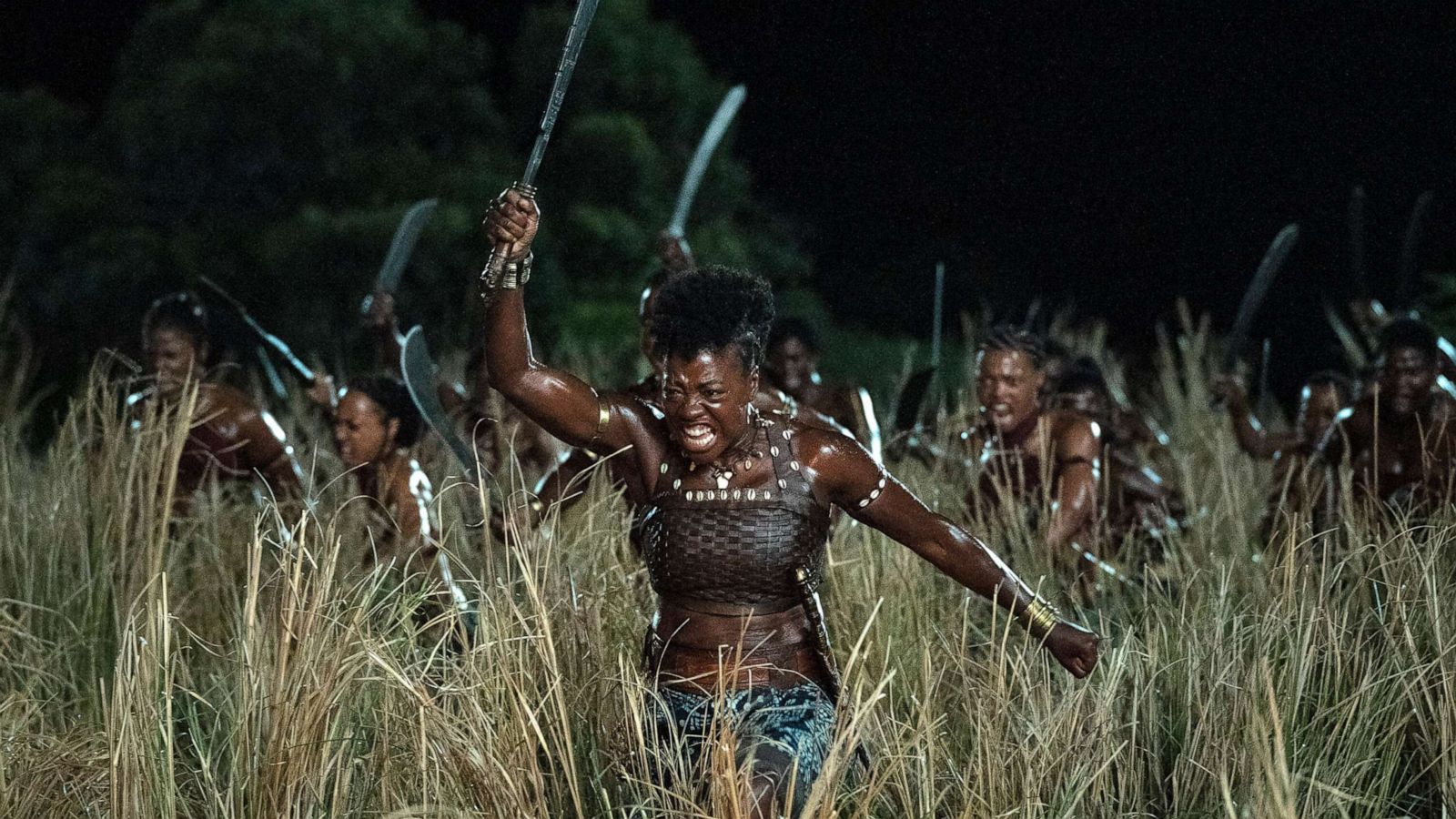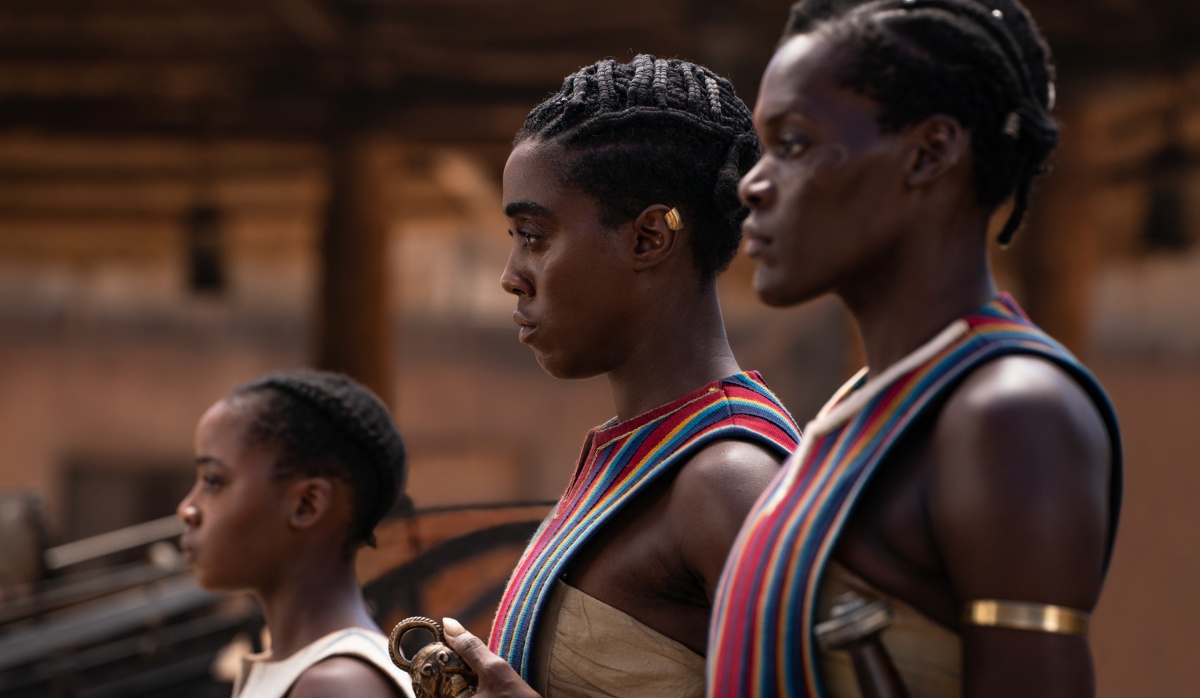The True Story of the Agojie, the Women Warriors of ‘The Woman King’

The Woman King, starring Viola Davis and John Boyega, has taken the world by storm—and raised some controversy along the way. The Woman King tells the story of General Nanisca (Davis) and her unit of female soldiers, the Agojie, who fight for the Kingdom of Dahomey in West Africa in the eighteen hundreds. Nanisca trains young candidates for the Agojie while trying to convince King Ghezo (Boyega) to divest from the slave trade. But how much of Nanisca’s story is true, and how much is fiction? Were the Agojie real? Did the Kingdom of Dahomey really participate in the slave trade? Here’s a rundown on the history behind the film.
The Agojie in The Woman King

In The Woman King, we meet a young woman named Nawi (Thuso Mbedu), who’s kicked out of her family and given to the king after she rejects an abusive suitor. Nawi soon finds herself among the Agojie, an elite fighting force that’s made up of women and girls who have been captured or turned away from their families. In order to join the Agojie, Nawi must endure grueling physical training, sparring matches, and tests, including one ordeal in which the new recruits are made to crawl through a thorny acacia bush.
Through Nawi’s eyes, we get to know Nanisca and the rest of the Agojie as they fight to free Dahomey from the exploitative Oyo Empire. The Agojie is a closely-knit sisterhood with a spiritual bond, and Nanisca serves as a mother figure to them. Throughout the film, Nawi bonds with Nanisca, lieutenants Izogie (Lashana Lynch) and Amenza (Sheila Atim), and the other new recruits. Nawi also gradually transforms from a plucky young girl into a tough, cunning, and ruthless warrior.
Meanwhile, Nanisca tries to convince King Ghezo that the cruelty and injustice of the slave trade aren’t worth the wealth that it’s brought Dahomey. Nawi and Izogie experience the horrors of the slave trade firsthand when they’re captured by Oyo forces and put up for auction on the coast before managing to escape.
The real life Agojie

According to The Smithsonian Magazine, the Agojie were a real fighting unit in Dahomey. There’s evidence that the Agojie began as an all-woman unit of elephant hunters in the 17th century, and Queen Hangbe incorporated them into her royal guard in the 18th century. The article states that when Dahomey’s male population fell because of ongoing warfare, the Agojie stepped in to supplement the ranks of Dahomey’s army. At their peak, the Agojie numbered in the thousands.
Like the Agojie in The Woman King, the real Agojie lived in a special section of the palace where men weren’t allowed, and since they were considered wives of the king, the Agojie were expected to practice celibacy. Like the fictional Agojie, the real warriors’ training regimen involved exercises like climbing over acacia thorns. There are also reports of Agojie desensitizing themselves to violence by beheading prisoners.
What about individual Agojie warriors? There are historical accounts of Agojie named Nanisca and Nawi, but while the filmmakers likely took these names as inspiration, the real Nanisca and Nawi bore little resemblance to Davis and Mbedu’s characters. Nanisca was a teenage recruit who later died in a battle against the French, and Nawi was one of the last surviving Agojie, who died in 1979.
Did Dahomey really take part in the slave trade?
Unfortunately, yes. Just like its fictional counterpart, the real Kingdom of Dahomey enriched itself by selling its captives to European slave traders. Other captives were kept as slaves in Dahomey itself. The real King Ghezo, like his fictional counterpart, was pressured to end Dahomey’s participation in the slave trade—although, in reality, that pressure came from the British government instead of an Agojie warrior like Davis’s Nanisca. After the historical Ghezo relented and divested from the slave trade in favor of palm oil production, he found that human trafficking was more lucrative, and resumed the practice before his son Glele took the throne.
Dahomey’s participation in slavery has spurred controversy among moviegoers. Some believe that the movie’s portrayal of Dahomey is too charitable, while others are under the impression that the movie doesn’t deal with the slave trade at all. Responding to the controversy, director Gina Prince-Bythewood told IndieWire that “I know all of that is going to go away once they see the film. There’s an assumption we’re not dealing with it and we are dealing with it.”
(image: TriStar Pictures)
Have a tip we should know? [email protected]
